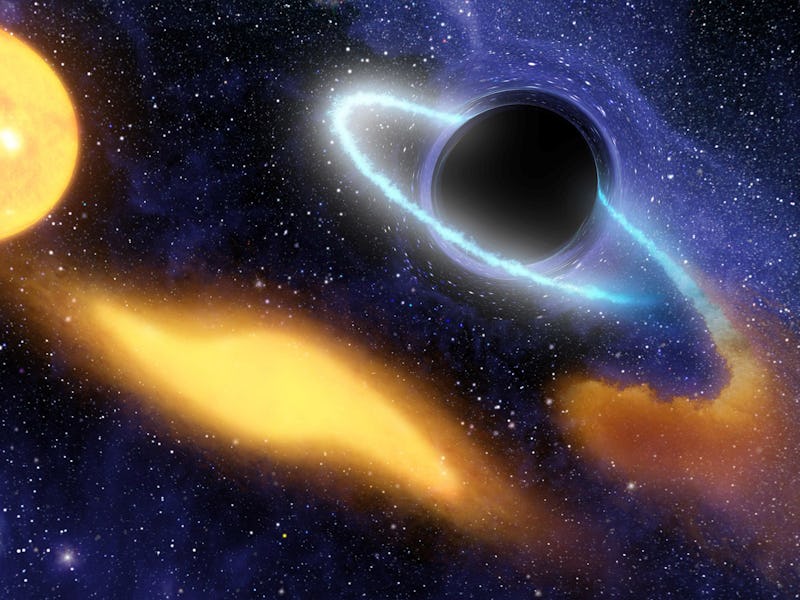After Swapping Cameras, Astronomers Spot Stars Being Ripped Apart All Around Us
The universe is far more violent than we realize.

The average supermassive black hole messily devours a star once every 50,000 years, new research suggests.
At the heart of every galaxy lurks a supermassive black hole: an object millions of times the mass of our Sun, compressed into a space so dense that not even light can escape its gravity. Occasionally, an unlucky star passes too close, and the supermassive black hole’s gravity rips the star to pieces and consumes its debris. Astronomers call these moments of cosmic violence “tidal disruption events,” and so far, they’ve witnessed just 12.
But Massachusetts Institute of Technology astrophysicist Megan Masterson and her colleagues were able to identify 18 more tidal disruption events by looking in infrared, using data from NASA’s Near-Earth Object Wide-field Infrared Survey Explorer (NEOWISE).
They published their work in The Astrophysical Journal.
This artist’s image shows a supermassive black hole beginning to rip apart a star.
The Unlucky Stars
Masterson and her colleagues searched archived data from NEOWISE for telltale flashes of infrared light that might reveal the death of a star ripped apart by a black hole hidden behind a curtain of dust. In the end, they found 18 bursts of light that matched the location of known galaxies and the type of sudden brightening and slow fading physicists expect to see when a black hole rips a star apart.
When a black hole gobbles up a star, it gives off a bright burst of light; that’s because the ripped, stretched-out innards of the star release energy as they fall into the black hole. Astronomers are used to looking for those bright flashes in visible light and x-rays. All 12 of the events they have been able to witness have happened in a rare type of galaxy called a post-starburst galaxy: one that’s just settled down after a boisterous round of forming new stars. So far, astronomers haven’t been able to explain why black holes should eat stars only in these galaxies, but Masterson and her colleagues say the answer could be dust — or a lack of it.
The galaxies in which astronomers have previously seen black holes ripping apart unlucky stars have one important thing in common: thanks to their recent histories, they don’t contain much dust because young, hot stars have blasted most of it away with radiation. That lack of dust makes it easy to see the flash of visible light and x-rays that marks the violent death of a star as it falls into a supermassive black hole. In other, dustier galaxies, however, the dust that shrouds the galaxy’s center (and the supermassive black hole that lurks there) absorbs optical light and x-rays, hiding the black hole’s depredations from prying eyes.
That’s why Masterson and her colleagues chose to look at infrared light, whose long wavelengths aren’t absorbed by dust. When a dust-shrouded supermassive black hole rips apart a star, the dust absorbs the visible light and x-rays. And they found black holes feasting on stars in galaxies all around us, hidden behind shrouds of dust.
The findings explain why, so far, tidal disruption events only seemed to happen in rare post-starburst galaxies. When Masterson and her colleagues used their data and the previous observations of these destructive events to predict how often tidal disruption events should happen in the nearby universe, they found that the supermassive black hole at the heart of any given galaxy should messily devour a star about once every 50,000 years.